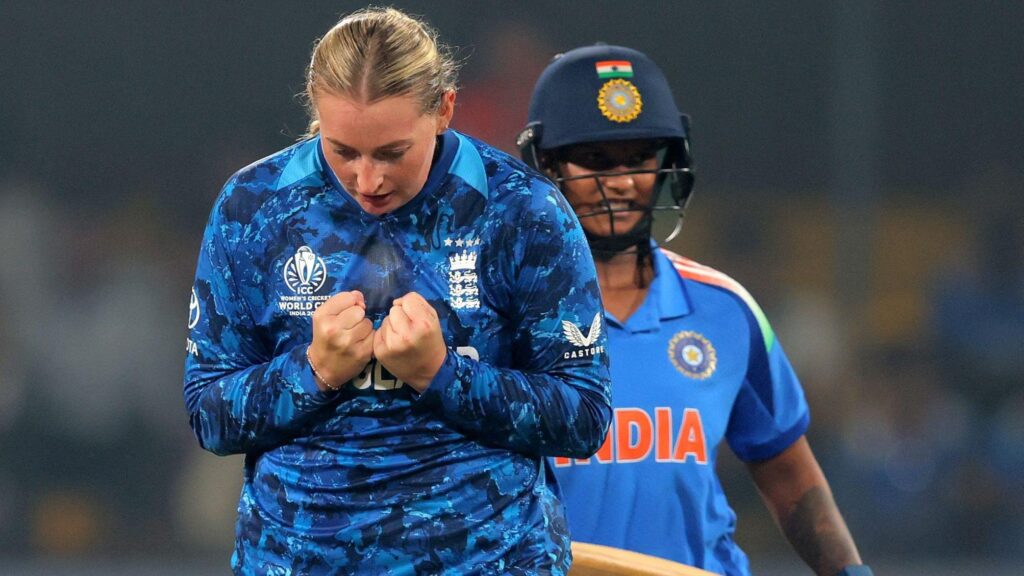- Advertisement -
As the Women’s ODI World Cup 2025 approaches, the Indian cricket team gears up for a highly competitive tournament where reaching the semifinals remains a key objective. Building on recent performances and growing talent, India faces a challenging path marked by strong opposition and high expectations from fans and experts alike. This article examines the critical strategies and areas of improvement that the Indian team must focus on to secure a spot in the semifinals and make a strong impact on the global stage.
Strengthening the Batting Lineup to Build Consistent Totals
India’s batting lineup must evolve beyond reliance on star players, cultivating depth and resilience at every position. Building consistent totals hinges on players developing the ability to adapt to diverse pitch conditions while maintaining steady momentum throughout the innings. This means middle-order batters need to tighten their shot selection under pressure and maximize scoring opportunities during the middle overs, ensuring the team never experiences drastic run-rate collapses. Regular partnerships of 50+ runs will be crucial, reinforcing the team’s foundation and providing a platform for the finishing batters to accelerate with confidence.
Key areas for improvement include:
- Enhancing strike rotation to minimize dot balls
- Developing aggressive yet calculated finishing roles
- Incorporating power hitters capable of rapid innings shifts
- Training for situational awareness in pressure scenarios
| Batting Role | Key Focus Area | Expected Impact |
|---|---|---|
| Top Order | Strong starts, wicket preservation | Foundation for total build-up |
| Middle Order | Partnership stability, strike rotation | Maintaining innings momentum |
| Lower Order | Power hitting, finishing skills | Boosting the final score |
Enhancing Bowling Strategies to Counter Key Opposition Players
India’s bowling unit must sharpen its tactical approach when facing opposition’s key batters, shifting away from conventional lines and lengths to more inventive methods. Deploying varied pace deliveries and targeting the stumps at crucial junctures can disrupt the rhythm of top-order hitters. Additionally, deploying spinners in the middle overs to exploit pitch conditions and create pressure through dot balls should be prioritized. Understanding individual batter weaknesses through video analysis will enable bowlers to execute precise plans, such as bowling wider to counter the pull shots of aggressive players or targeting the pads to induce lbw dismissals for players prone to flick shots.
Effective field placements aligned with these bowling strategies can choke scoring opportunities and build psychological pressure. Utilizing attacking fields early on, such as leg slips and short midwicket, against aggressive players can force risky shots. Conversely, defensive setups with deep fielders should be rotated to stem boundaries in the death overs. The combination of smart bowling and tactical fields is crucial in controlling the match tempo and triggering breakthroughs. The table below summarizes some key bowler-batter matchups and suggested tactics to watch in the tournament:
| Opposition Batter | Bowling Tactics | Field Setting |
|---|---|---|
| Top-order Aggressor | Short balls & wide yorkers | Leg slip, short midwicket |
| Spin-lover Middle Order | Flatter off-spin, drift ball | Close catchers, ring field |
| Power-hitter Finishers | Slower balls & yorkers | Deep square leg, fine leg |
Fostering Fielding Excellence and Mental Resilience Under Pressure
India’s journey in high-stakes cricket tournaments often hinges on the team’s ability to combine sharp fielding skills with unshakeable mental strength. With the increasing pace of the women’s game, every run saved on the field can shift momentum drastically. Indian players need to focus on improving agility, anticipation, and communication to cut down boundaries and create more run-out opportunities. Emphasizing tailored drills for slip catches, quick reflex stops, and boundary saves will help polish fielding standards to world-class levels.
Beyond physical prowess, mental toughness under pressure defines champions. In crunch moments, simplistic decision-making and maintaining composure can turn the tide. Coaches should integrate psychological training regimes such as mindfulness, scenario-based simulations, and pressure-cooker match exercises. This holistic approach ensures players remain calm and confident across high-pressure overs. Key areas to target include:
- Stress management techniques to handle match-defining moments
- Team communication drills for seamless coordination
- Real-time analytics feedback to build situational awareness
| Fielding Area | Current Benchmark | Target Improvement |
|---|---|---|
| Catch Conversion Rate | 82% | 90% |
| Run Out Frequency | 1 every 3 matches | 1 every 1.5 matches |
| Boundary Saves per Match | 5 | 8 |
To Wrap It Up
As the Women’s ODI World Cup 2025 approaches, India’s cricket team faces a critical juncture. To secure a place in the semifinals, they must address key strategic and performance areas, including strengthening their middle order, enhancing death-over bowling, and maintaining consistency with both bat and ball. With a blend of emerging talent and experienced campaigners, India has the potential to make a significant impact on the global stage. However, execution under pressure will be vital. The coming months will be crucial as the team fine-tunes its approach, aiming to not only reach the semifinals but also contend strongly for the title.
- Advertisement -


